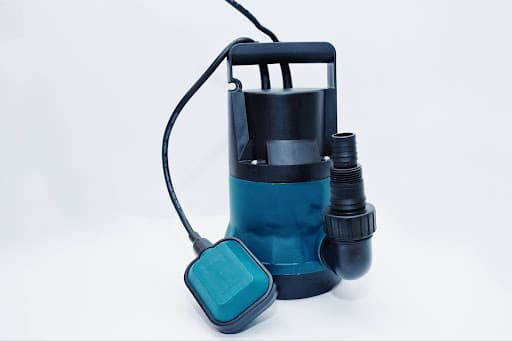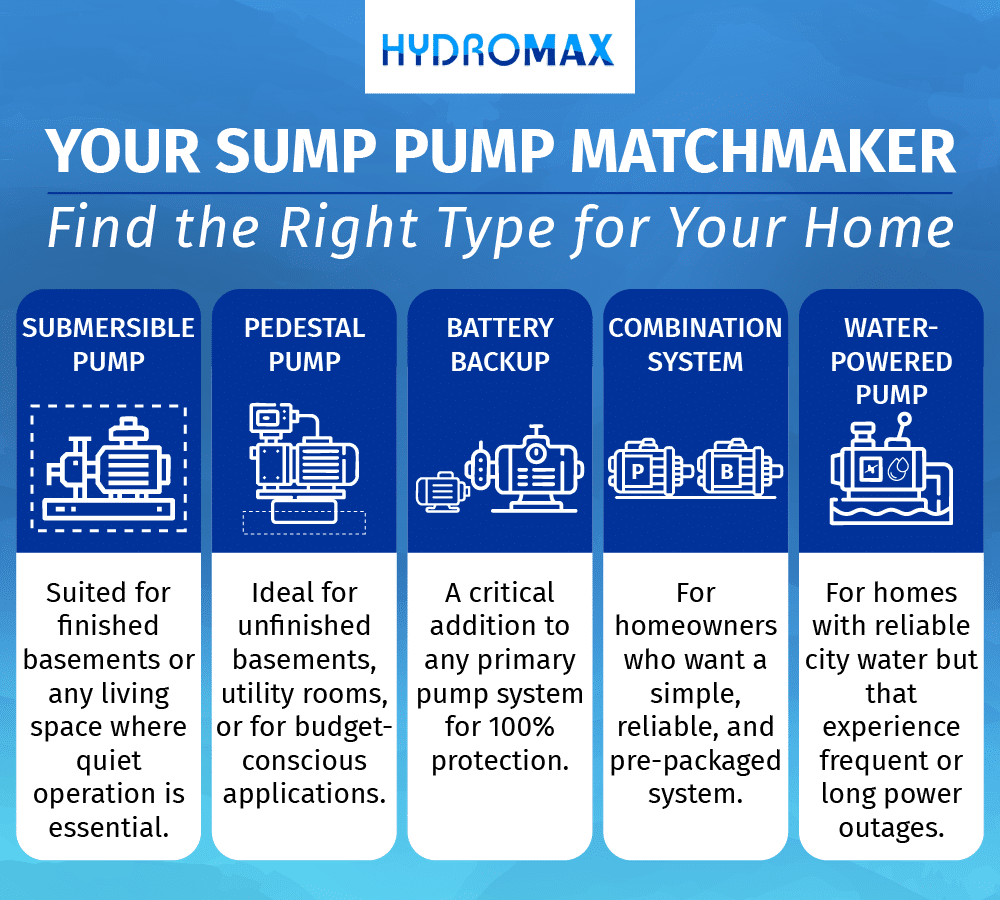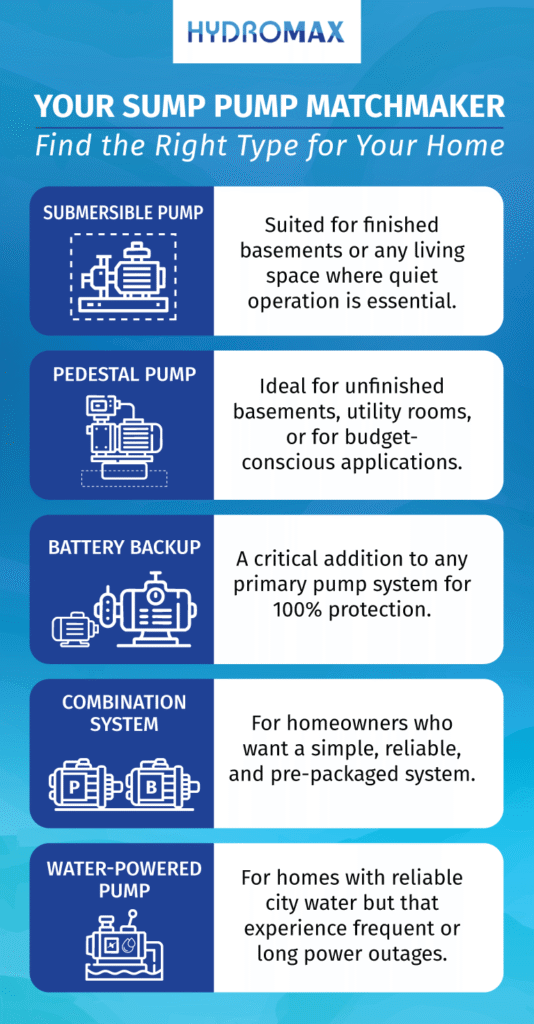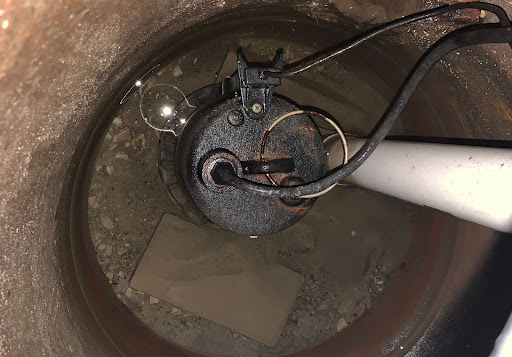
A flooded basement can cause thousands of dollars in damage to your home’s foundation, walls, and valuable possessions. Your first and best line of defense is a reliable sump pump. But with different types, power sources, and features available, choosing the right one can feel overwhelming.
This guide simplifies the process, walking you through everything from selecting the right model to proper installation and maintenance, ensuring your property stays dry when it matters most.
A sump pump is more than just a piece of equipment—it’s an essential safeguard for your property’s value and your health. Even a single inch of water infiltration can lead to a cascade of problems that are both costly and dangerous.
Investing in a quality sump pump system that is correctly sized and installed isn’t an expense; it’s insurance against these catastrophic outcomes.

Understanding the fundamental differences between pump types is the first step in making an informed decision.
Installed directly inside the sump pit, these pumps are fully submerged during operation. Their motors are housed in a waterproof casing, protecting them from damage. The surrounding water also helps cool the motor as it runs, extending its lifespan, especially in situations requiring frequent pumping.
This design features a motor positioned on a column above the sump pit, out of the water. Its exposed motor is easier to access for service but is also louder and more susceptible to debris.
A battery backup is a secondary, DC-powered pump that sits alongside your primary pump. If the power goes out or the main pump fails, a controller automatically activates the backup, which runs off a deep-cycle marine battery. This ensures you remain protected during storms when power outages are most likely.
These systems bundle a primary submersible pump and a battery backup pump into a single, pre-assembled package. This eliminates the guesswork of matching components and simplifies installation, providing a complete out-of-the-box solution.
Operating entirely without electricity, these pumps use your home’s municipal water pressure to create powerful suction that pulls water out of the pit. While incredibly reliable during power outages, they increase your water bill and require strong, consistent city water pressure (typically 40+ PSI) to function.
Best For: Homes with reliable city water but frequent, prolonged power outages


Selecting the perfect pump requires evaluating these critical factors to ensure reliable, efficient performance.

A great sump pump will only perform as well as its installation and upkeep allow.
Improper installation is the leading cause of premature failure. A professional ensures these critical steps are handled correctly:
While this guide provides a strong foundation, ensuring your sump pump is selected and installed for peak performance is a job for experts. At Hydromax Plumbing, we take the guesswork out of flood protection.
A well-selected sump pump is your most essential defense against water damage, safeguarding your property, health, and finances. By choosing the right type, ensuring it’s professionally installed, and committing to simple maintenance, you can rely on your system for years of dependable protection.
Don’t leave your property’s safety to chance. For expert sump pump installation, maintenance, or 24/7 emergency support in Southern Indiana, trust the professionals at Hydromax Plumbing. Contact us today to secure your property against basement flooding.